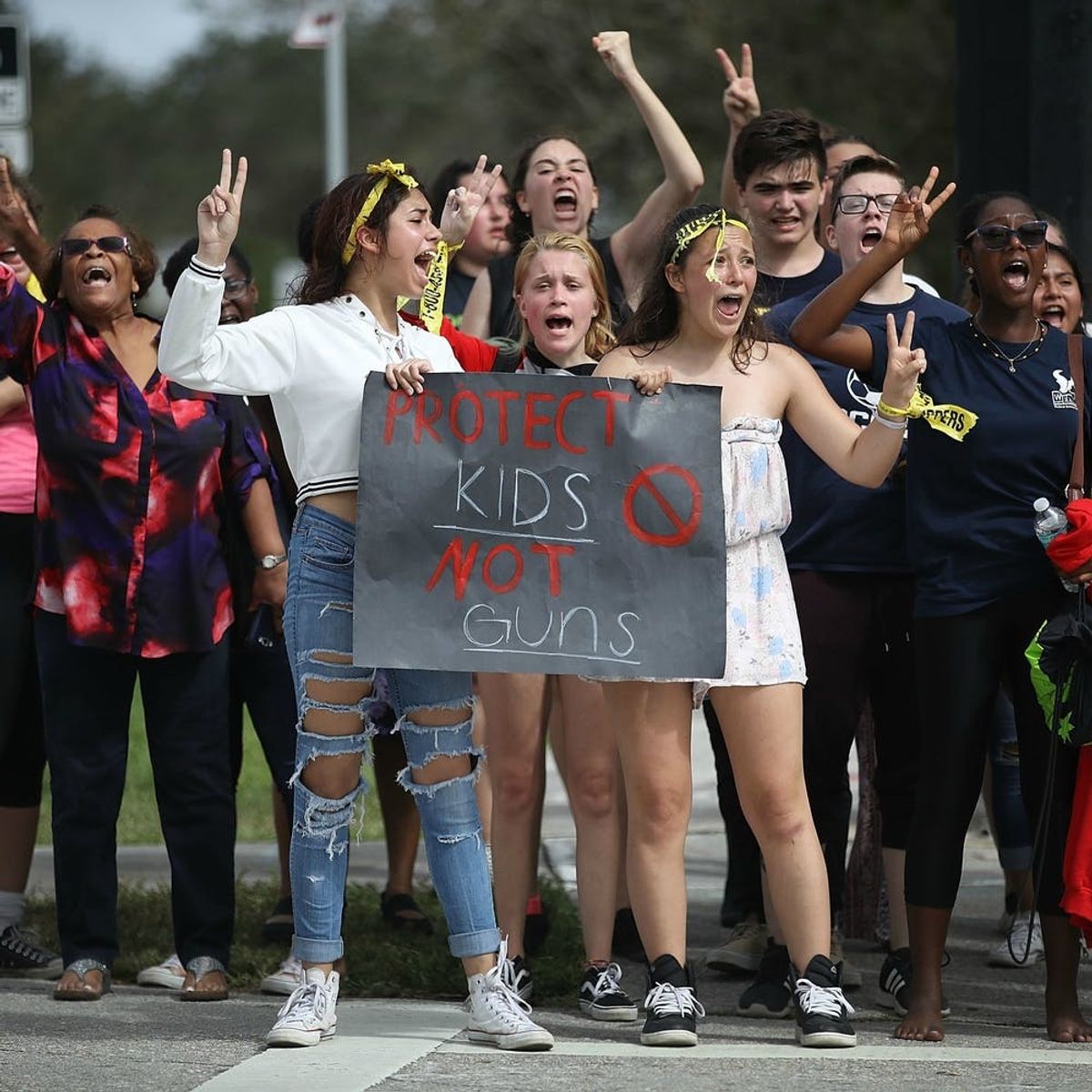There’s more to ending gun violence than simply being nicer to people.
“Walk Up, Not Out” Isn’t the Answer to Gun Violence

While thousands of students across the country were marching out of their schools yesterday in protest of limited gun control laws, and in honor of the 17 people killed in Parkland, Florida last month, a digital movement was urging kids to “walk up, not out” to help curb the violence.
The idea behind “walk up, not out,” is that “walking up” to lonely or bullied students and making them feel included is more effective violence prevention than “walking out” of school in signal to lawmakers to restrict firearm access. It’s a fine suggestion, except that research shows it likely isn’t enough to prevent school shootings.
The #March4OurLives supporters will accomplish only two things. 1. They'll exercise their 1st Amendment right. 2. They'll get a little exercise. If you really want to stop the next school shooter #walkupnotout pic.twitter.com/9kY3k53xcr
— Ryan Petty (@rpetty) March 13, 2018
“Instead of walking out of school on March 14, encourage students to walk up,” reads the now-viral post by Florida entrepreneur Ryan Petty. “Walk up to the kid who sits alone at lunch and invite him to sit with your group; walk up to the kid who sits quietly in the corner of the room and sit next to her, smile and say Hi; walk up to the kid who causes disturbances in class and ask how he is doing; walk up to your teachers and thank them; walk up to someone who has different views than you and get to know them — you may be surprised at how much you have in common.”
“Build on that foundation instead of casting stones. I challenge students to find 14 students and 3 adults to walk up to and say something nice in honor of those who died in FL on the 14 of March. But you can start practicing now!”
While it reads like a wonderful ode to standing up and changing the dynamics between different people, the message also implicitly blames victims of school violence for failing to prevent attacks. The message presumes that the Parkland teens created an isolating, bullying environment for their school’s shooter; in reality, he was mentally unwell and had easy access to the assault rifle he used to kill 17 people.
In fact, regardless of the physical or mental health of any shooter, the one thing that connects this kind of violence is the weapon used, not a lack of kindness or friendliness from those around them.
And while a 2014 report did show that bullied kids are more likely to bring guns to school, a 2017 report concluded that bullying is not enough to lead to gun violence. With the CDC currently barred from doing any research on gun violence, there is, sadly, a lot we still don’t know about this public health crisis.
Of course, there are many reasons that people feel as if they need to take their anger out on others, but besides getting them the support they need, we also need to ensure that easy access to dangerous weapons is limited — which is the entire point of the many ongoing protests planned by the kids of America and in the wake of the Parkland shooting.

(Photo by Joe Raedle/Getty Images)



















